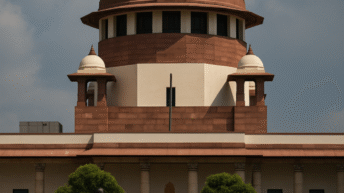
Pakistan’s investment ratio has plunged to its lowest level in 50 years, falling to just 13.1% of the size of the economy in the outgoing fiscal year, according to the figures approved and unveiled by the National Accounts Committee (NAC). The fixed investment-to-GDP ratio too has gone down one percentage point to 11.4% from last year’s 12.4% level. Besides, investments in the private sector touched 8.7% of the GDP in this fiscal year, the lowest level in almost 25 years.
This is despite big claims by the State Investment Facilitation Council (SIFC) of which the Pakistan Army has been a part for almost two years now. This low investment-to-gross domestic product (GDP) ratio clearly indicates that the fundamentals of Pakistan’s economy are very weak. It was close to sovereign default (meaning the nation could have defaulted on its debt repayments) on more than one occasion in the past two years. However, loans from the International Monetary Fund (IMF) saved the country from this embarrassment but it is not out of the woods yet.
The pathetic ratio is also reflective of the inherent political instability heightened due to the massive rigging of the February 8 elections this year to keep former Prime Minister Imran Khan and his party, Pakistan Tehreek Insaaf (PTI) out of power. This was done at the behest of General Asim Munir who has appropriated a role for himself as also Pakistan Army in all civil institutions.
The SIFC is perhaps the single most important organisation in which the military now has a constitutional role. The Pakistan Democratic Movement (PDM) headed by Shehbaz Sharif had established the SIFC through an Act of Parliament, obviously at Army’s prodding. The stated aim of the SIFC was to help the government boost the country’s low investment and remove bottlenecks for economic growth.
The SIFC is a joint body run by military and civilian officials and has claimed investments of $25 billion from Saudi Arabia alone. General Munir claimed that due to SIFC mobilisation, Saudi Arabia would invest $5 billion per annum for five years. Despite all the rhetoric and bombast, and whatever efforts have been made to date, nothing of the sort has happened. In terms of concrete proposals for translating investments into projects, there have been no tangible results.
The Pakistani government had set itself a modest 15.1% investment-to-GDP ratio target for the year but it fell short by two percent, clocking just 13.1% in the outgoing fiscal year. This figure tells a stark story as it stood at 13.2% in the fiscal year 1973-74. The ratio is much better for other nations in South Asia, its regional peers and Pakistan’s percentage is at least 20% lower than the comparable figures clocked by India.
For a comparison, figures of investment to GDP ratio recorded by India during the last two decades can help. During the 2003 to 2007 period, it rose from 27 to 39 percent. Currently, the investment ratio stands at 34 percent of the GDP and is expected to climb to 36 percent in the 2026-27 fiscal year. All these figures are based on a report prepared by economists of Morgan Stanley in March 2024.
It bears mention here that the Pakistan government is trying to get another IMF loan, larger in size and with a later repayment period. An IMF team discussed the prospective investments Pakistan expects over the next few years. The historical low of 13.1% investments can only act as a dampener for the IMF. Meanwhile, the SIFC has mainly remained involved in coordination issues among federal and provincial governments. However, one thing is clear: its efforts have not led to significant increases in either foreign or domestic investments.
Erratic taxation policies appear to be one major reason for reduced investment in manufacturing. For development projects, if any, the government takes control; it will be constrained to mobilise its own resources via loans as the investment targets have not been met. It should be noted that the government is already taking loans to repay its previous debts which means that development projects will go for a toss.
Another structural variable the economists usually look for is the savings-to-GDP ratio. That too has decreased slightly from 13.1% to 13% in this fiscal year and fell short of the official target. All these poor numbers indicate the economy’s failure to address structural imbalances.
Two years ago, the size of Pakistan’s national economy was put at $375.6 billion but for the current fiscal year it is slightly lower at $373.6 billion. Interestingly, the officials have said that the calculations regarding the per capita income are wrong. In the last fiscal year, the per capita income was estimated at $1,551, and was shown to have risen to $1,674 this year. However, this per capita income is estimated based on a population of 236 million while, with a 2.6 percent annual demographic growth, the latest census figures have put the population at over 248 million, the officials have pointed out.
An interesting fact about Pakistan Prime Minister Shehbaz Sharif’s policies of increased dependence on the Army and intelligence agencies came to the fore late in May. Believe it or not, the Army, the Inter Services Intelligence (ISI), Military Intelligence (MI) and the Intelligence Bureau of Pakistan will all have a supervisory role in the power sector.
The Sharif government has now approved the establishment of a military-staffed Distribution Companies Support Unit (DCSU) to handle problems in the power sector. The first such support unit has been planned in the Multan Electric Power Company (MEPCO). The power distribution companies of Faisalabad, Gujranwala, Lahore, Islamabad, Multan, Quetta, and Peshawar will also soon get personnel from the Army and intelligence agencies to help them run their operations.






Add comment